MusicRadar Verdict
Pros
- +
Incredibly detailed emulation of Plexi amps and speakers
- +
Three flavours – including great clean tones
- +
The boost and footswitch options enhance usability
Cons
- -
Lack of headphone output undermines its flexibility somewhat
MusicRadar's got your back
Universal Audio UAFX Lion '68 Super Lead Amp pedal: What is it?
Marshall-in-a-box is quite a vague term, isn't it? There are many numerous of Marshall tube amp, but Universal Audio is well aware that the Plexi is near the very top of the desirability list. It has decided to celebrate the legacy and hone in on emulating not just one specific Marshall amp in one pedal, but three.
Plexi can be a confusing term too. What does it even mean? Inspired by the panels made from plexiglass that were used on Marshall amps between 1965 and 1969, it doesn't just refer to one specific Marshall model.
For many it's the amp that goes under the model number 1959, the 100-watt Super Lead – a response to The Who's Pete Townshend's request for more power onstage. But there's also the Super Bass.
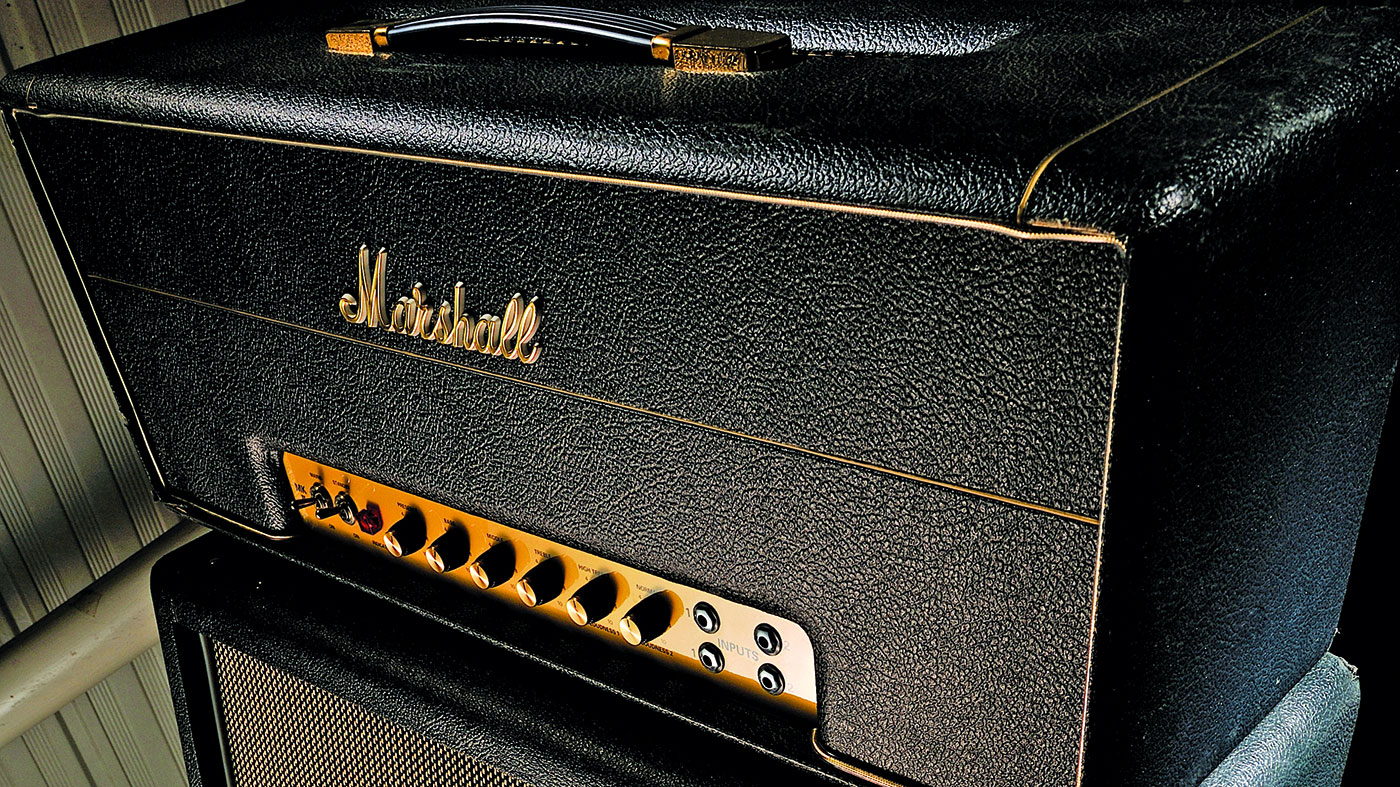
Just as the 1959 model wasn't made in 1959, and the Super Bass is not exclusively a bass amp (though Lemmy loved them). This amp (model name JMP 1992 Super Bass 100) was first launched in 1967 and won fans in notable players including John Frusciante, Tom Bukovac, Jimmy Page and Paul Kossoff. Why did they prefer it over the Super Lead? There's not a lot of difference between them in terms of components but the Super Bass offers more clean headroom for pedals, warmer low end and less aggressive gain that could have all contributed to the appeal.
Universal Audio has emulated 1968 examples of both amps in the Lion, and a third mode called Brown. The clue is in the name for Eddie Van Halen fans, though UA can't use the connection to market it. Instead, it's described as a 100-watt Super Lead with Variac'd power, circuit tweak and EQ'd boost. These mods were what Eddie called his "little tricks" but it's still debated how much of his amps were modified.
We do know the Variac transformer allowed him to power his Super Lead on a lower voltage live at about 140V; running quieter, using the Variax to control volume and keeping his Super Lead tubes healthy longer in the band's legendary club days. The Super Lead was a core part of the first three Van Halen albums and what's become known as Eddie's 'Brown' sound.
Whatever the details, Pete Thorn illustrates in the video below just what this mode can do. It's also important to note Eddie reportedly used a range of cabs over the years; Celestion G12M 25w earlier on, according to Groundguitar, Vintage 30 later on in the mid-'80s, and JBL D-120 speakers in one of the cabs for the band's debut.
There are six different cab emulations with the Lion '68 (three of those are accessible after you register the pedal) and the JB|GB is the destination for you Van Halen fans. I addition there's Room studio ambience, the amps' controls represented (including presence), plus an EP-III preamp boost control.
As the fourth UAFX amp modelling pedal after the impressive Ruby '63, Woodrow '55 and Dream '65, expectations are high here. When those Fender and Vox emulations were announced the calls for a Marshall model were loud. Now the first one of them is here; UA has gone all-in on the Plexi experience. Like the previous three, this is a modelling amp; it can be run straight to a PA, DAW or FRFR. How well it packs all the history in, we're about the find out.
Universal Audio UAFX Lion '68 Super Lead Amp: Performance and verdict
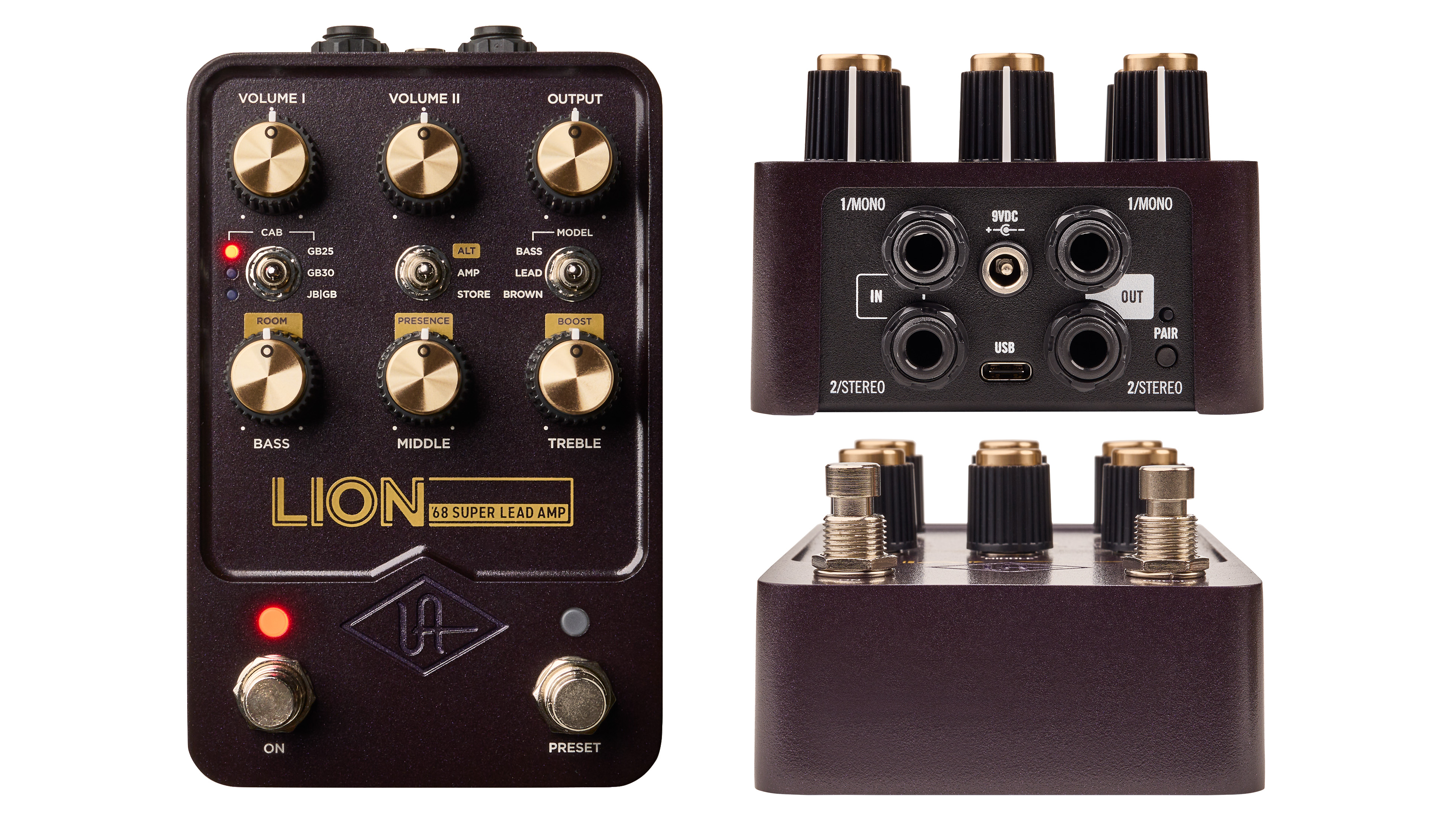
While the UAFX amp pedals aren't anyone's idea of cheap, compared to their tube amp counterparts – and especially the prime vintage examples they're based on – there's a strong argument that they create accessibility to those kinds of tones for more guitar players. And flexibility too; ever plugged a Super Lead head and a cab in at home? We'd advise against it if you are at least presently cordial with your neighbours.
UA has done the homework – UAFX senior product manager and sound designer James Santiago is an amp romantic and analyst, spending months searching for stock reference units with the team before a project can even properly begin. Then they go deep into schematics and each component, deciding which details to add as options and core experience.
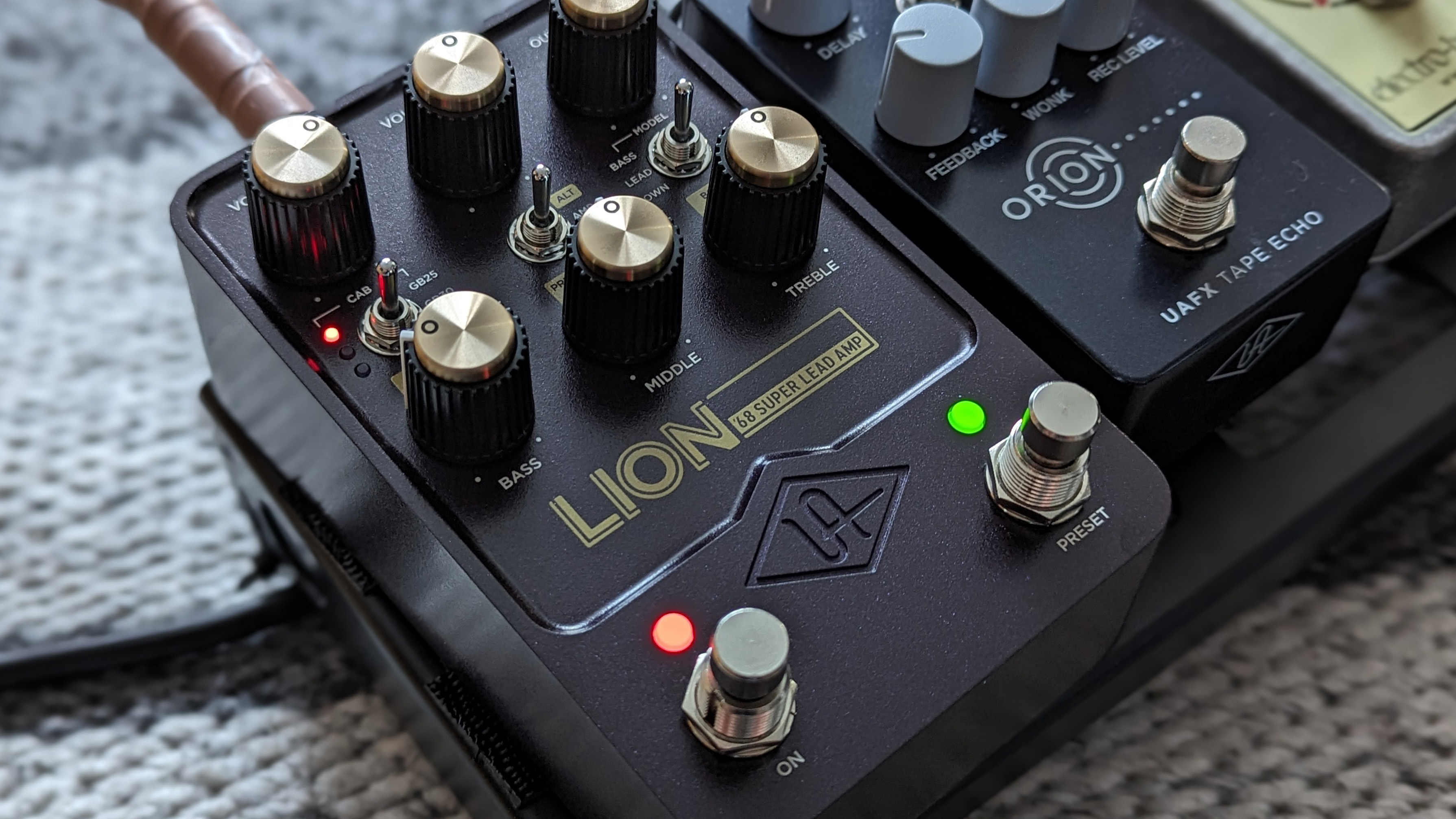
I get a real feel for tailoring these amps and cabs to different pickups and what emerges is some incredible versatility
If your experience with vintage Plexi heads is minimal at best, the Lion '68 is an education. The Super Lead alone would be an experience, but the three-amp focus here feels a treat. Combined with the six cab choices and hands-on controls I get a real feel for tailoring these amps and cabs to different pickups and what emerges is some incredible versatility.
The Lion '68 offers the best modelled Plexi tones I've heard in the digital realm – the first sign of what UA has achieved is the response to the volume controls of the guitars I tried with it. It's everything to the Super Lead experience, allowing you to control gain effectively without the kind of abrupt volume drops that could render it unusable in a live setting… or indeed any other. It's strikingly effective here, crucially at lower volumes that are house-friendly. I even tried it with a Spark Mini for a Plexi desk rig and it was excellent! This sense of dynamic means the Lion really behaves like the Marshall tube amps in a way that I don't take for granted, and it makes the pedal something you can use a lot for real – or should I say realistic – world environments.
While the two Super Leads can roar, with the Brown proving to be very much a hot-rodded take as promised, the 100-watt Super Bass with its high headroom emerges as an excellent platform for clean tones and drive pedals. It's a great transition option for those coming from Fender combos and offers an appealing blend of edge and low-end rounded weight to build on with my Wampler Tumnus and Mooer Green Mile TS-style overdrive pedals. The Lion's own boost is based on the Echoplex preamp pairing favoured by Jimmy Page – it has a darker tonality that worked really well with my brighter pickups, but it might not suit others' tastses. A useful tool to have on hand regardless. You can assign it to kick in on the second footswitch or assign that switch to trigger and whole second Lion amp/cab pairing if you wish.
The details, the feel here as you explore dynamics and what the Lion can do is testament to UA's curation and dedication to going deep with its subject matter. It's very different to the Aladdin's cave approach of multi-amp modelling floor processors, but for those of us turned off by menu screens and option overload, it's refreshingly reassuring. Sometimes one great amp model is enough, but here there's three.
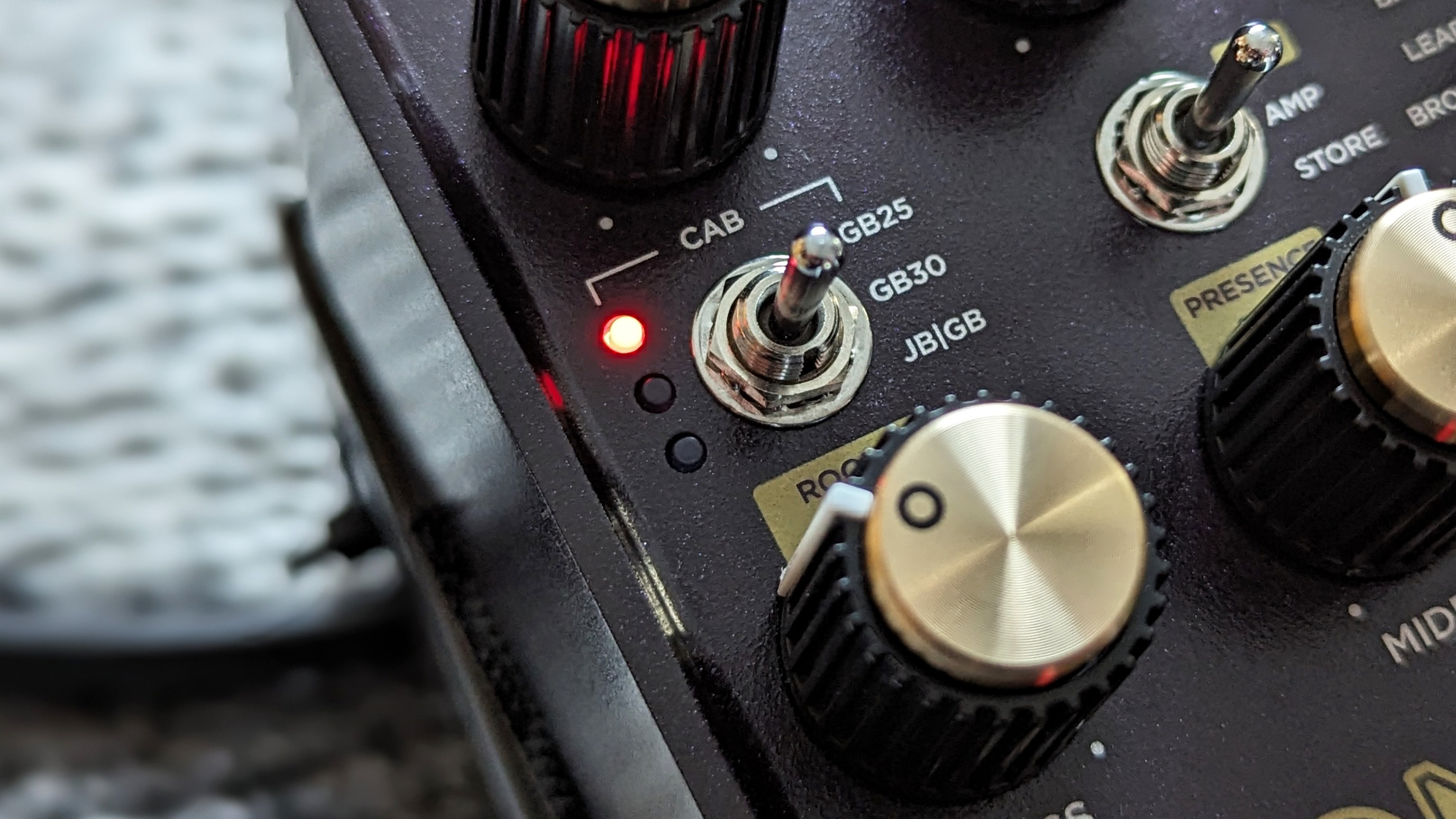
Having the controls correspond to the amps' is a huge part of the tactile, familiar experience that bridges the schools with the UAFX amp pedals. Your pickups and preferences will determine how you dial in – and I preferred to dial the Bass back on the Super Bass to allow for its undeniable low-end leaning, but that was dependent on whether I was using PAF-style humbuckers or brighter Firebird and P-90 guitars.
For the Super Lead, it's inherently brighter and this can get pushed further with Vol 1, with Vol II bringing in the lower add to balance with it. The famed bright cap mod is also an option you can turn off and on for this amp model via the UAFX Control app. This cap increases the high end of the Super Lead, but even here UA has dug deeper: 'We've modified the stock bright cap to 100 pF, as used in the earlier JTM 45 amp, for jangly highs without the harshness of the original cap value of 5000 pF,' says the company.
Connecting the UAFX app to the pedals via Bluetooth has become far more stable and reliable with my Android phone since UA rolled out a new firmware. Honestly, I'm not a fan of a relatively compact pedal's features requiring a Bluetooth connection via phone or tablet to access but for many of us, it'll be a set-and-forget affair with the Lion '68. There's still plenty of interesting preset goodness to entice you back to it – sounds that are a great showcase of what the Lion '68 can do. When I borrowed a friend's Les Paul Tribute to try some of these iconic sounds I couldn't help grinning.
Alongside a heap of amp presets from Plexi icons (including song-specific Kossoff, Van Halen, Eric Johnson, AC/DC and Jimmy Page sounds), it offers access to an optional four-parameter noise gate that's great to have for recording, Input Routing options and Ghost Notes for the full authentic Plexi menu of how these amps would be manipulated by players for specific character traits.
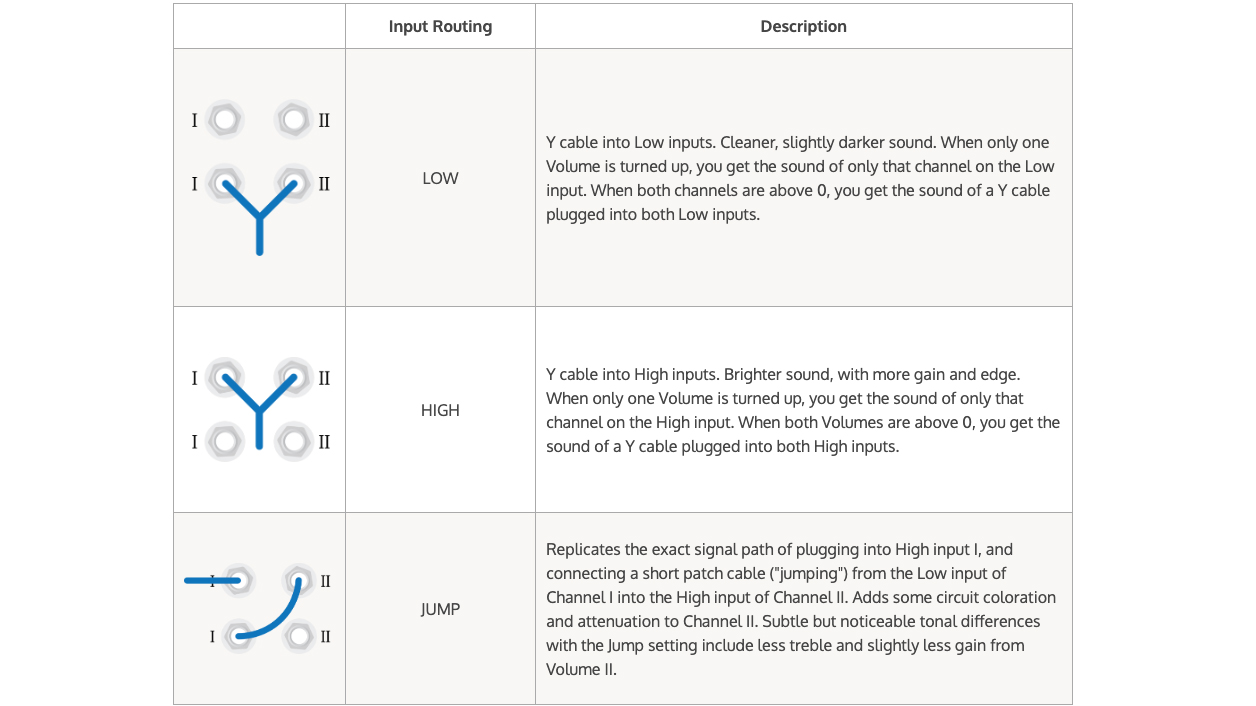
The options for the former are Low, High and Jump routing. Each has its own effect on the sound that you can see in the diagram above. The Ghost Notes mod is available in all three amp models and activated, simulates the original amps' transformer and power supply that was subject to additional hum. This resulted in harmonics on certain notes, referred to as ghost notes – especially in higher-end soloing. When the mod is off it simulates a cleaner power supply with less hum.
While these are comparatively subtler influences, the cab IRs have a huge influence on the experience. I found I kept coming back to the classic Oxford emulation on the Dream '65, but with the Lion and its trio of Plexis I tended to change things up a lot more depending on guitars and needs.
Unsurprisingly, the GB30 feels like home – an IR of Vintage Celestion Greenback 30-watt speakers in a 4x12 closed-back cab, mic'd with a 57 dynamic mic and a ribbon 121 mic. The Greenback is a cornerstone of classic rock recordings, but I especially found the GB25 (Classic 12", 200 watt Electro-Voice EVM12L speaker with a massive magnet in a 1x12 cabinet) useful for bringing focus and some shine to darker humbuckers.
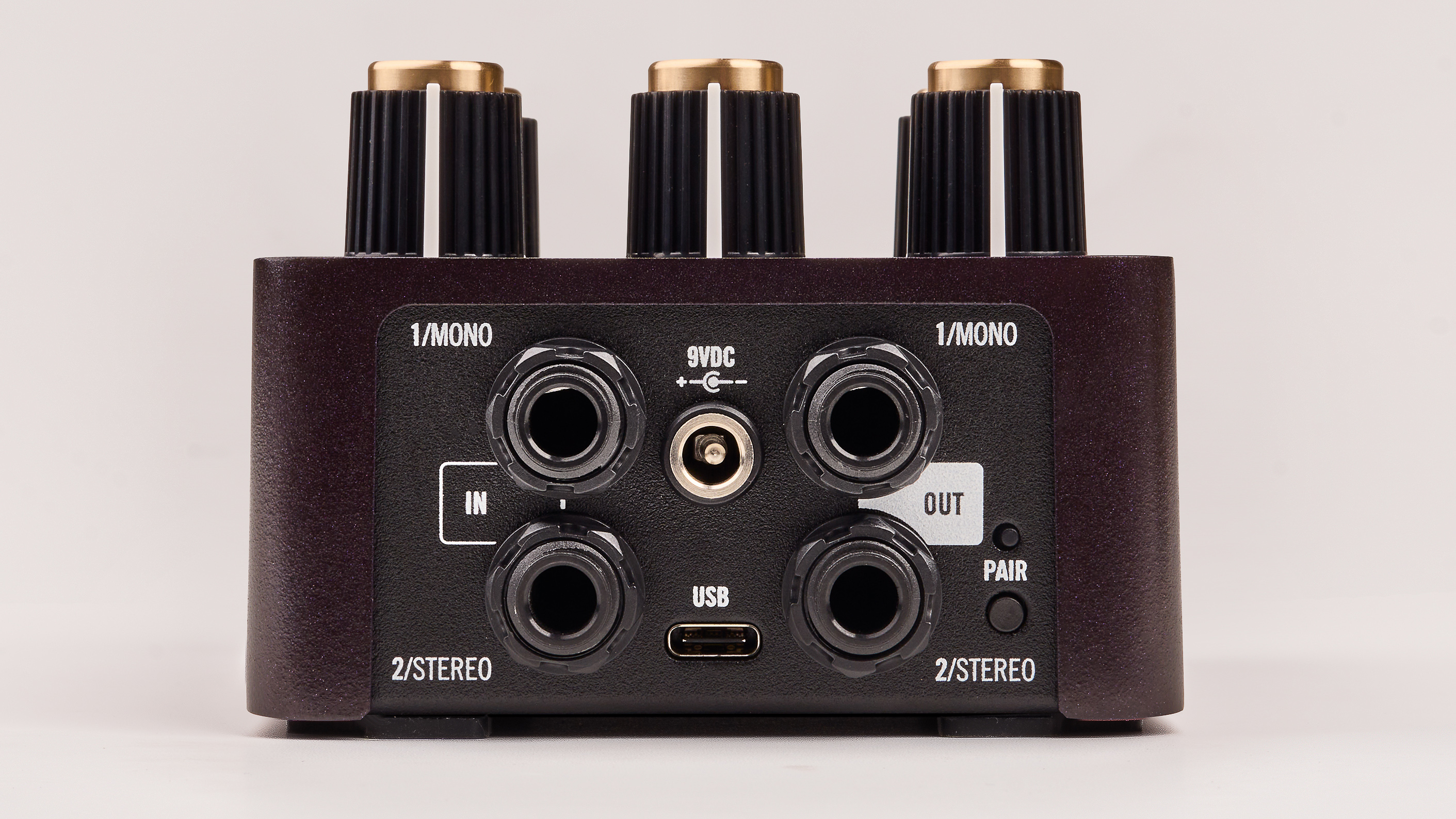
It's not necessarily a matter of whether the Lion will replace tube amps
Despite what seems to be all-in-one experience, you still need the right physical FRFR cab to get the best of the Lion and really exploit its detail and amp experience. Using a venue PA's monitor lightens the load but might be too far from amp tradition for some players used to an amp behind them. I found pleasing results with a Line 6 Powercab, and even a Spark 40 for more polite home levels (turn all the latter's modelling options off and they make a great practice partner for amp pedal). But the recent Fender Tone Master FR cabs might help to bring even more of that traditional feel to the stage.
Moreover, it's not necessarily a matter of whether the Lion will replace tube amps. As he told us himself, UA pedals have worked out for the Edge in Las Vegas, but for some of us it's not even a choice – we either don't have the money or environment to enjoy and get the best from tube amps, let alone choice vintage examples with multiple cab options.
Digital modelling allows us to choose options that fit with the scenarios we play in; recording, low-volume home playing, gigging… this is an accurate and detailed Plexi experience, the closest I've heard a 'Marshall-in-a-box' get. In a mix that accuracy will be less noticeable over other Marshall modellers – some which offer multiple amp models for the money – playing solo more so. As ever, consider your expectations and user needs, but I feel the asking price here is for the amount of depth and detail UA has again gone into in its emulation process that reflects in the sounds I experienced.
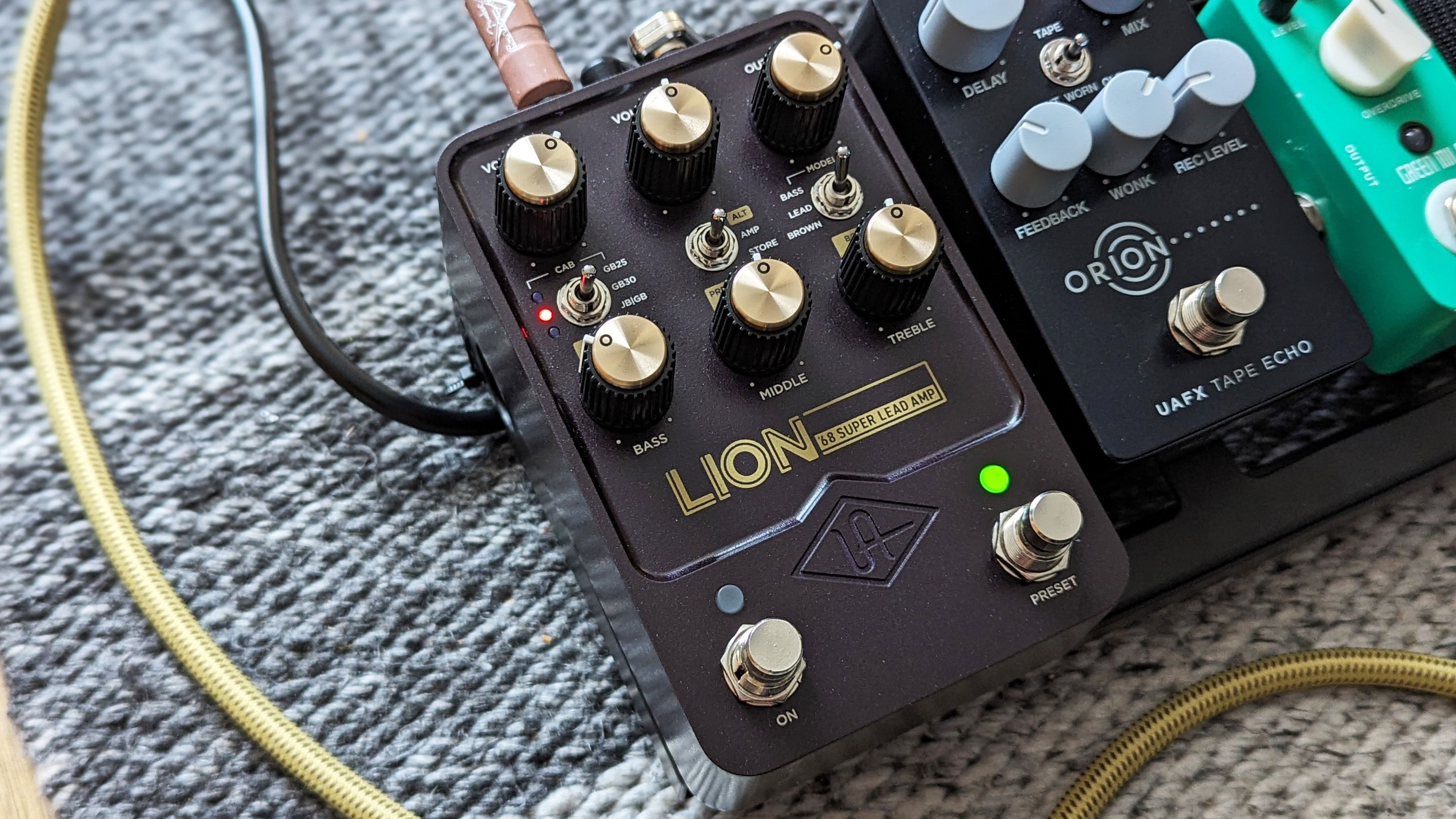
The Lion's second biggest asset is flexibility – with footswitch options that allow you to switch between two different Plexi amps and cabs. But there's a drawback on that flexibility side.
And it's the same omission I singled out for the previous three UAFX amp pedals and the Ox Stomp; the lack of headphone output undermines the concept somewhat for me. A lot of players want and need the option of practicing with headphones, and in the digital realm especially they should be given it. Stymon, Walrus Audio, TC Electronic and the big names of floor processor modelling all offer it. Why not UA?
It's the only real downside of another highly impressive amp emulator here, one that finds Universal Audio again affirming its place at the forefront of pedal-based modelling because the ultimate proof is in the sounds.
MusicRadar verdict: Universal Audio's first Marshall pedal in the UAFX line lives up to expectations; this is an incredibly detailed deep-dive into the Plexi experience with the versatility to shine at home and away.
Universal Audio UAFX Lion '68 Super Lead Amp pedal: Hands-on demos
Dylan Adams

Guitar Bonedo
Andertons
Universal Audio UAFX Lion '68 Super Lead Amp pedal: Specifications

- TYPE: Pedal emulation of Marshall '68 Super Lead, '68 Super Bass and modified Super Lead amplifiers with six cab IRs
- CONTROLS: Volume I, Volume II, Output, Cab IR mini toggle, Amp control / Alt control / Store preset mode selection mini toggle, Model selection mini toggle, Bass (Room), Middle (Presence), Treble (Boost), bypass/boost and preset footswitches
- FEATURES: Bright cap switch for Super Lead models, Ghost Notes, Input Routing, factory presets (all accessed via UAFX Control app), Stereo and mono in/out, UAB-C for firmware updates
- POWER: 9V DC pedalboard isolated power supply (400mA power draw)
- CONTACT: Universal Audio

Rob is the Reviews Editor for GuitarWorld.com and MusicRadar guitars, so spends most of his waking hours (and beyond) thinking about and trying the latest gear while making sure our reviews team is giving you thorough and honest tests of it. He's worked for guitar mags and sites as a writer and editor for nearly 20 years but still winces at the thought of restringing anything with a Floyd Rose.
“Every note counts and fits perfectly”: Kirk Hammett names his best Metallica solo – and no, it’s not One or Master Of Puppets
Ranked: Bon Iver's albums, from Sable, Fable to For Emma, Forever Ago
“Its mission is simple: unleash the power of any amplifier or line-level source without compromise”: Two Notes promises a “watershed” in tube amp control with the Torpedo Reload II













